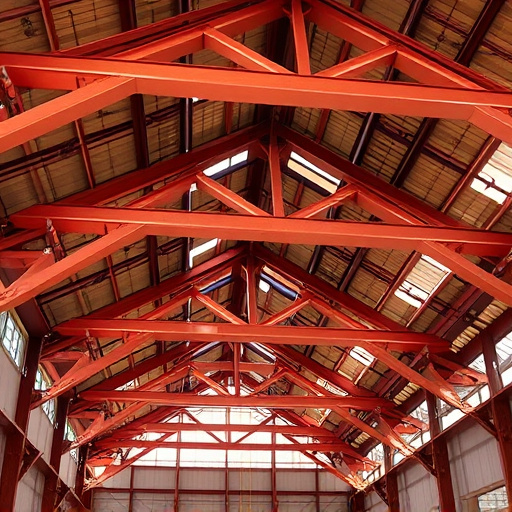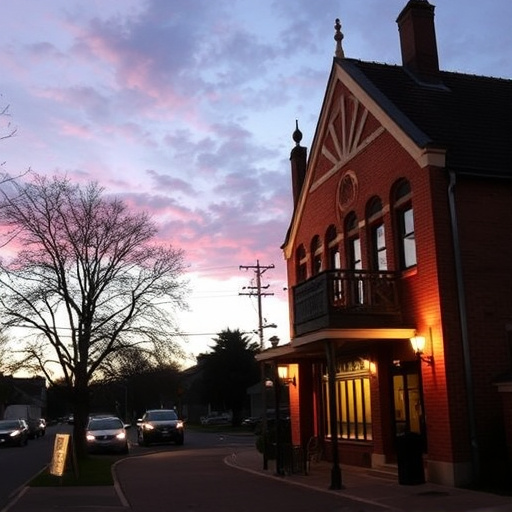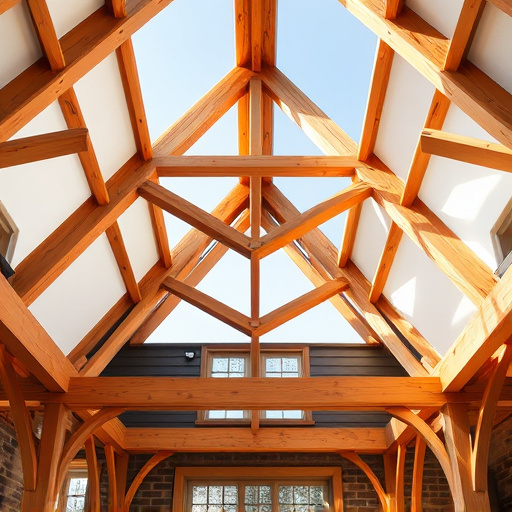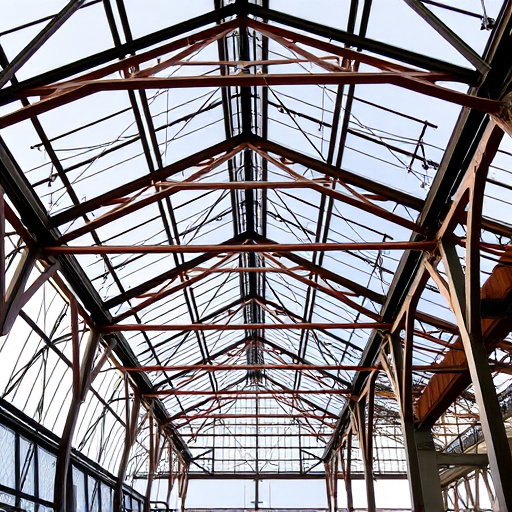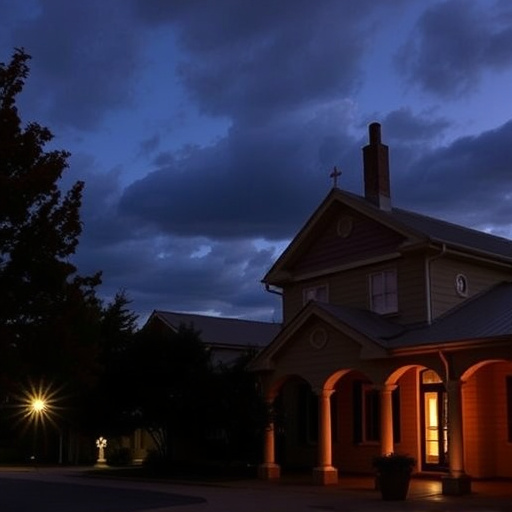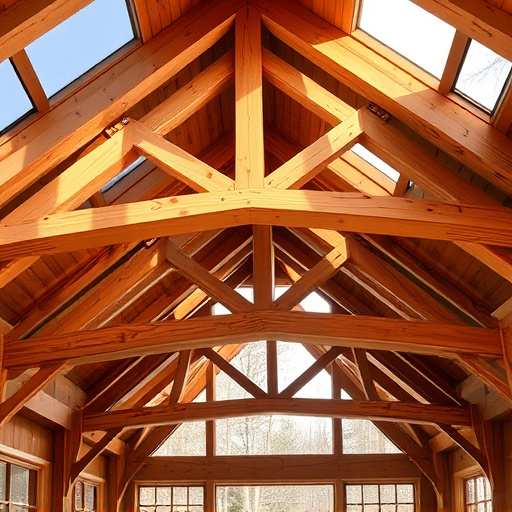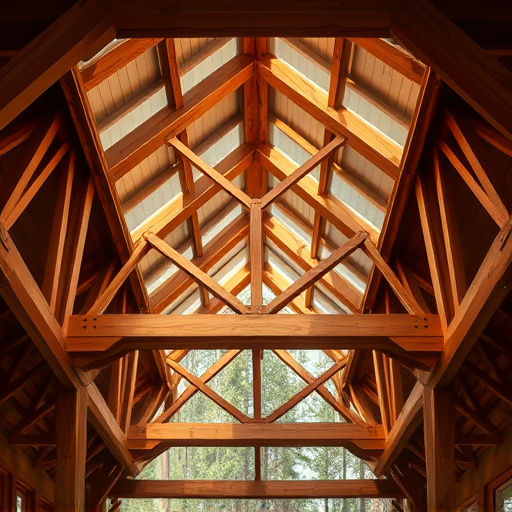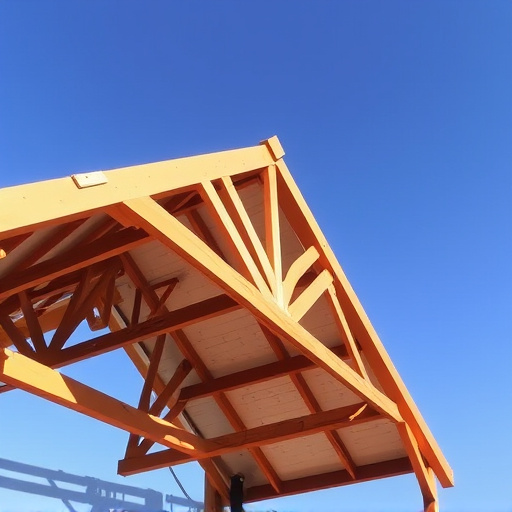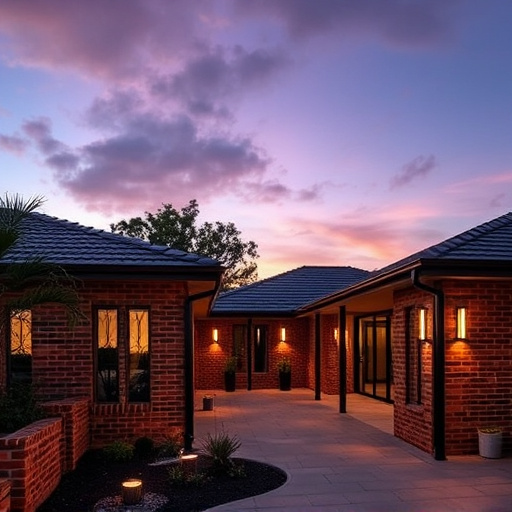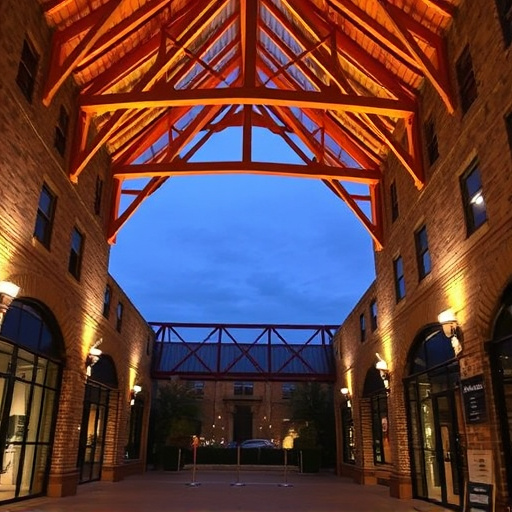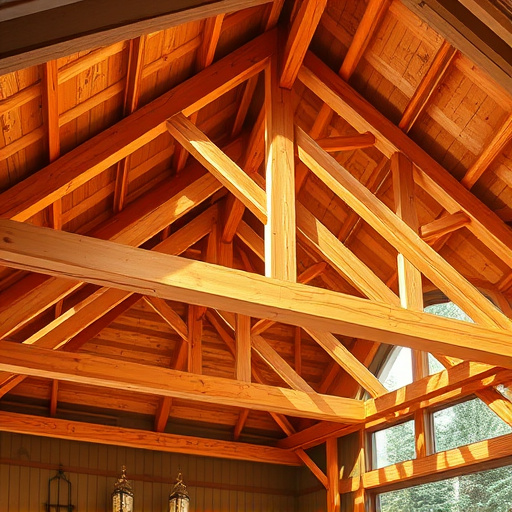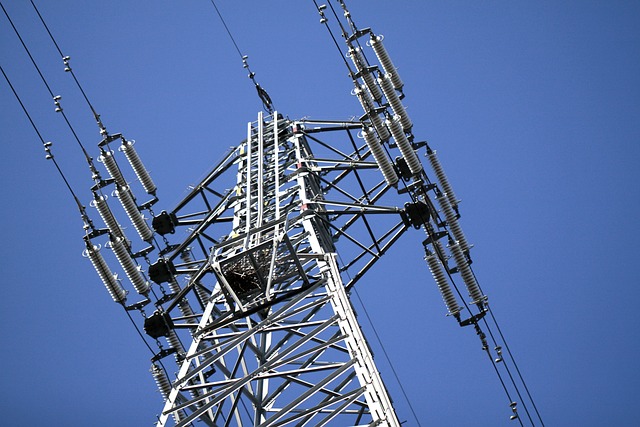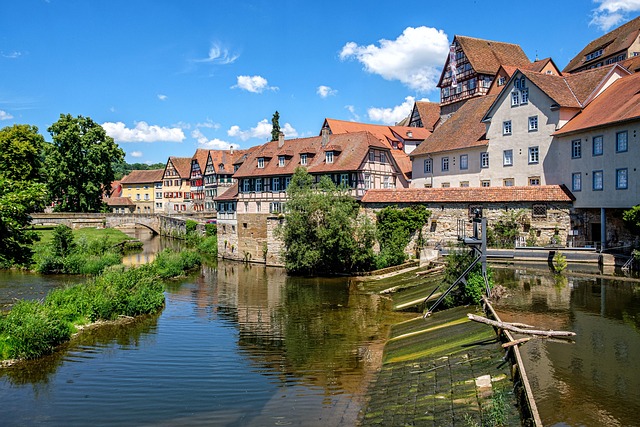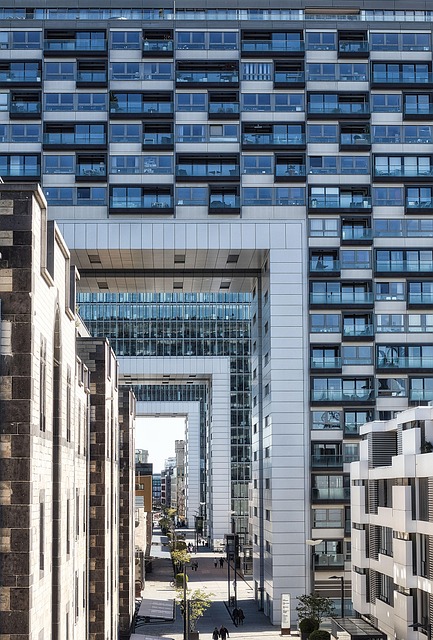Truss Bendigo: A Comprehensive Exploration
Introduction
Welcome to an in-depth exploration of a revolutionary concept that has captured the attention of urban planners, architects, and policymakers worldwide—Truss Bendigo. This innovative approach to structural engineering and sustainable city development is reshaping the urban landscape, offering a unique blend of aesthetics, functionality, and environmental consciousness. In this article, we will embark on a journey through the various facets of Truss Bendigo, uncovering its history, global impact, economic implications, technological innovations, regulatory framework, challenges, and the bright future it holds.
Understanding Truss Bendigo: Unlocking the Concept
Definition and Core Components
Truss Bendigo, in its essence, is a modular structural system designed for urban development, emphasizing lightweight construction, adaptability, and rapid assembly. It involves the use of advanced truss structures, typically made from high-strength materials like carbon fiber or advanced alloys, to create versatile frameworks that can support various functions within a city. These trusses are interconnected to form a complex yet stable network, allowing for creative building designs and efficient space utilization.
The core components include:
- Truss Modules: Pre-fabricated sections of the truss structure, designed to be easily assembled and disassembled. Each module is engineered to bear specific loads and can be customized for diverse applications.
- High-Strength Materials: The use of lightweight yet robust materials ensures structural integrity while minimizing material consumption and environmental impact.
- Interconnectivity: Trusses are connected via specialized joints, enabling them to work together as a cohesive system, capable of spanning significant distances and supporting various loads.
Historical Context and Evolution
The concept of truss systems has its roots in the 18th century when agricultural and industrial structures began to require larger spans and increased loading capacities. Traditional wooden trusses evolved into more complex designs, employing metal components for strength and durability. Fast forward to the 21st century, and Truss Bendigo emerged as a modern interpretation, leveraging advanced materials, computational design tools, and digital fabrication techniques.
This evolution was driven by the need for:
- Sustainable Development: The construction industry faced increasing pressure to reduce environmental impact while meeting urban growth demands.
- Rapid Deployment: With natural disasters and rapid urbanization, there was a growing need for flexible, quickly deployable structures.
- Creative Architecture: Architects sought ways to break free from traditional designs, embracing new forms that could enhance urban aesthetics.
Global Impact and Trends: A World of Possibilities
International Adoption and Adaptation
Truss Bendigo has garnered global attention since its inception, with various countries adopting and adapting this technology to suit their unique needs and architectural styles. Its versatility allows for cultural interpretations, resulting in diverse applications:
| Region |
Notable Projects |
Unique Aspects |
| Europe |
The EuroTruss Project in Germany combines trusses with green spaces, creating a sustainable urban park. |
Integrates nature into urban development. |
| North America |
The SkyBridge in Vancouver, Canada, offers breathtaking views and a unique pedestrian experience. |
Focuses on tourism and experiential design. |
| Asia |
The Shanghai Tower, featuring advanced truss systems, is one of the world’s tallest buildings. |
Emphasizes structural innovation and vertical development. |
| Australia |
The Brisbane Showgrounds redevelopments utilized trusses for event spaces, showcasing adaptability. |
Versatility in temporary and permanent structures. |
Key Global Trends Shaping Truss Bendigo
Several trends are influencing the global trajectory of Truss Bendigo:
- Sustainability: There is a growing emphasis on environmentally friendly materials and construction methods, driving innovation in lightweight trusses.
- Smart Cities: Integrating technology into truss systems to create ‘smart’ urban spaces that enhance connectivity and efficiency.
- Modular Construction: The adoption of modular design principles for faster construction and reduced waste.
- Customized Architecture: Architects are pushing boundaries, designing unique forms that challenge conventional architecture while maintaining structural integrity.
Economic Considerations: A Driving Force
Market Dynamics and Investment Patterns
The economic impact of Truss Bendigo is significant, driven by several factors:
- Cost Efficiency: Pre-fabrication and modular design reduce construction times and labor costs, making it an attractive option for developers.
- Flexible Leasing: Trusses can be leased, providing businesses with flexible space options, which is particularly appealing in dynamic urban markets.
- Real Estate Values: The introduction of Truss Bendigo has the potential to increase property values, attracting investments in cities with innovative applications.
Investment Opportunities and Returns
Investors are drawn to Truss Bendigo projects for various reasons:
- High Rental Yield: Leased truss spaces often command premium rates due to their unique features and flexibility.
- Long-Term Value Appreciation: Cities embracing Truss Bendigo may experience increased infrastructure values, leading to capital gains over time.
- Diversification: Investing in innovative construction methods offers a diversified portfolio strategy within the real estate sector.
Technological Advancements: Pushing Boundaries
Innovations Shaping the Future
Technological advancements have been pivotal in refining and expanding the capabilities of Truss Bendigo:
- Digital Design Tools: Advanced software enables complex structural analysis, allowing for more intricate and efficient truss designs.
- 3D Printing: This technology aids in rapid prototyping, enabling designers to create unique truss structures with precision.
- Sensors and IoT: Integrating sensors into trusses allows for real-time data collection, enhancing structural monitoring and optimizing performance.
- Advanced Materials: Continuous research leads to the development of lighter, stronger materials, further improving truss efficiency.
Future Potential and Research Directions
The future of Truss Bendigo holds immense promise:
- Autonomous Construction: Drones and robots could be employed for assembly, reducing labor costs and increasing construction speed.
- Adaptive Structures: Trusses could respond to environmental stimuli, adjusting shape or orientation for optimal performance.
- Integrated Energy Systems: Incorporating solar panels and wind turbines within trusses to create self-sustaining urban spaces.
- Virtual Reality (VR) Planning: VR technology will enable stakeholders to virtually experience proposed truss structures, aiding in design refinement.
Policy and Regulation: Navigating the Legal Landscape
Key Policies and Frameworks
The development of Truss Bendigo is guided by various policies and regulations that vary across jurisdictions:
- Building Codes: Local building codes dictate structural requirements, ensuring safety and compatibility with existing infrastructure.
- Environmental Regulations: Policies aimed at minimizing environmental impact, particularly in terms of material use and waste management.
- Zoning Laws: These laws control land use and development, influencing the placement and design of Truss Bendigo projects.
- Permitting Processes: Obtaining permits for construction can involve multiple agencies, ensuring compliance with various standards.
Challenges and Harmonization Efforts
One of the primary challenges is the lack of standardized global regulations, which can create complexities for international projects:
- Regulatory Harmonization: Different countries may have varying requirements, making it challenging for developers to navigate diverse legal landscapes.
- Cultural and Historical Considerations: Existing policies might not accommodate the unique aesthetic and structural aspects of Truss Bendigo.
Efforts to harmonize policies are essential to facilitate global adoption and ensure consistent quality and safety standards.
Challenges and Criticisms: Overcoming Obstacles
Main Concerns and Solutions
Despite its numerous advantages, Truss Bendigo faces several challenges that require thoughtful strategies:
-
Initial Cost: High upfront costs for design, material, and construction can deter developers, especially in budget-constrained projects.
- Solution: Incentives, grants, or tax benefits could encourage the adoption of Truss Bendigo, offsetting initial expenses.
-
Material Sourcing and Recycling: The use of advanced materials raises concerns about availability and environmental impact.
- Strategy: Promoting recycling programs and investing in sustainable material sources can address these issues.
-
Structural Integrity in Extreme Weather: Critics question the durability of trusses during extreme weather events.
- Addressing Concerns: Rigorous testing and design standards, along with regular structural assessments, ensure safety and resilience.
Case Studies: Real-World Success Stories
In-Depth Examples of Truss Bendigo Applications
Case Study 1: The Eco-Friendly Urban Park – Berlin, Germany
In the heart of Berlin, the EuroTruss project transformed a former industrial site into an eco-friendly urban park. Using modular trusses, architects created a network of green spaces supported by sustainable materials. This innovative design attracted locals and tourists alike, showcasing Truss Bendigo’s potential in creating vibrant public spaces.
Key Takeaways:
- Integrated nature and technology enhance urban experiences.
- Modular construction enables quick transformation of underutilized spaces.
- Local communities benefit from aesthetically pleasing, eco-conscious environments.
Case Study 2: Adaptive Event Spaces – Brisbane, Australia
The Brisbane Showgrounds underwent a renaissance with the introduction of Truss Bendigo technology. The leaseable truss structures provide flexible event spaces, catering to various functions while offering stunning urban views. This case highlights the adaptability and cost-effectiveness of trusses for temporary and permanent uses.
Key Insights:
- Leased trusses offer businesses diverse, high-end event venues.
- Modular design facilitates rapid setup and teardown, reducing logistical challenges.
- Dynamic city landscapes benefit from adaptable infrastructure.
Future Prospects: Looking Ahead
Emerging Trends and Growth Areas
The future of Truss Bendigo is filled with exciting possibilities:
- Smart Cities 2.0: As cities embrace IoT (Internet of Things), truss structures will become integral to the smart urban fabric, enabling data-driven decision-making.
- Sustainable Urbanism: With a growing focus on sustainability, Truss Bendigo will play a pivotal role in creating net-zero carbon urban environments.
- Vertical Development: High-rise truss buildings could redefine skyline aesthetics while optimizing land use.
- Public Art and Cultural Spaces: Trusses will continue to be transformative elements in public art installations, fostering community engagement.
Strategic Considerations for Developers
To capitalize on these trends:
- Collaborate with technology providers to integrate smart solutions into truss systems.
- Partner with environmental agencies to develop sustainable materials and construction practices.
- Engage with local communities to ensure cultural sensitivity and embrace unique design opportunities.
- Embrace modularity to offer diverse, adaptable space options for tenants.
Conclusion: Shaping the Urban Landscape of Tomorrow
Truss Bendigo represents a paradigm shift in urban development, offering a harmonious blend of engineering excellence, environmental consciousness, and creative architecture. As we conclude this exploration, it is evident that Truss Bendigo is not just a concept but a powerful tool to address contemporary urban challenges. Its global impact and diverse applications demonstrate its versatility and potential.
Looking ahead, the future prospects for Truss Bendigo are promising, with technology advancements and a growing focus on sustainable development fueling its growth. By embracing innovative solutions, policymakers, developers, and architects can shape vibrant, resilient, and aesthetically pleasing cities that cater to the needs of current and future generations.
FAQ Section: Answering Common Queries
Q1: How do Truss Bendigo projects impact local ecosystems?
A: When designed with environmental considerations, Truss Bendigo can enhance urban ecosystems. Green truss spaces provide habitats for local flora and fauna, contributing to biodiversity. Additionally, sustainable material choices minimize the ecological footprint of construction.
Q2: Can trusses withstand extreme weather conditions?
A: Yes, modern truss systems are designed to meet stringent structural integrity standards. Rigorous testing ensures their resilience against high winds, heavy rains, and other extreme weather events. Regular maintenance further enhances their durability.
Q3: Are there any safety concerns regarding Truss Bendigo structures?
A: Safety is a top priority in Truss Bendigo design. Local building codes and regulations ensure that trusses meet strict safety standards. Regular inspections and maintenance contribute to the long-term structural integrity of these systems.
Q4: How does Truss Bendigo impact property values?
A: The introduction of Truss Bendigo projects can stimulate local real estate markets due to their unique features and enhanced urban aesthetics. Leased spaces often command premium rates, while areas with innovative truss developments may experience increased property values over time.
Q5: Can Truss Bendigo be integrated into historic city landscapes?
A: Absolutely. Careful design considerations enable Truss Bendigo to complement historic architecture. Cultural sensitivity and collaboration with local stakeholders ensure that these modern structures respect the heritage of a city while offering innovative solutions.
Truss Bendigo is a critical structural element, offering stability and load support. Steeline Roofing Centre Bendigo excels in precision engineering trusses for even weight distribution, preventing failures. Their local expertise adapts to regio…….
Continue Reading
Truss Bendigo's Steeline Roofing Centre is a central resource for residential and commercial roofing needs in Bendigo. With convenient location, operating hours (typically M-F), and multiple communication channels, the centre offers quick r…….
Continue Reading
Truss Bendigo, as exemplified by Steeline Roofing Centre's offerings, is a crucial component of roofing systems, providing structural stability and aesthetic appeal. The centre offers diverse truss options suitable for residential and comme…….
Continue Reading
Truss Bendigo structures are gaining popularity due to their numerous advantages in roof construction and repair, with Steeline Roofing Centre Bendigo offering high-quality, durable trusses designed for weight support, stability, and weather res…….
Continue Reading
Steelee Roofing Centre Bendigo is a leading provider of residential and commercial roofing solutions, offering high-quality Steeline truss products for diverse architectural styles. Strategically located in Bendigo, they deliver expert advice, e…….
Continue Reading
Truss Bendigo's Steeline Roofing Centre at 6 Harrien Ct, Epsom VIC 3551 offers comprehensive roofing solutions for residential and commercial clients. They provide custom metal roof trusses, repairs, maintenance, and expert advice via +61 3…….
Continue Reading
Steeline Roofing Centre Bendigo's Truss Team provides superior roofing solutions with expert craftsmanship and years of experience. Located at 6 Harrien Ct, Epsom VIC 3551, they offer custom truss designs, repairs, and replacements for resi…….
Continue Reading
Steeline Roofing Centre Bendigo offers modern, durable roofing solutions with aesthetic appeal and easy maintenance. They provide expert guidance and custom trusses for both residential and commercial projects. Located at 6 Harrien Ct, Epsom VIC…….
Continue Reading
Steeline Roofing Centre Bendigo offers expert truss systems for both new construction and renovations in Bendigo. They provide diverse options like kingpost, scissor, and gable trusses, catering to various architectural styles and climatic condi…….
Continue Reading
Steeleine Roofing Centre Bendigo is a leading provider of roof solutions, including Truss Bendigo. Their expert team offers tailored designs for both residential and commercial properties, leveraging local knowledge to ensure quality and style……..
Continue Reading
Steeleline Roofing Centre Bendigo is conveniently located at 6 Harrien Ct, Epsom VIC 3551, offering easy access for locals and visitors alike. With ample parking and direct routes from South Road or Brown Street, the centre prioritises customer…….
Continue Reading
Steeline Roofing Centre Bendigo offers Truss Bendigo, a revolutionary roofing solution combining strength, aesthetics, and durability. Their high-quality trusses, crafted from superior materials, are ideal for both residential and commercial pro…….
Continue Reading
Steeline Roofing Centre Bendigo offers a wide range of steel roof trusses for various architectural styles, from rustic to modern designs. Their advanced truss solutions, catering to both residential and commercial projects, prioritize quality,…….
Continue Reading
Steeline Roofing Centre Bendigo, located at 6 Harrien Ct, Epsom VIC 3551, Australia, is a premier supplier and installer of high-quality Steeline roofing solutions. They offer a comprehensive range of trusses and steeline products for residentia…….
Continue Reading
Steeline Roofing Centre Bendigo is your expert partner for truss solutions, offering a full spectrum of services from design to installation and maintenance. With skilled professionals, they provide custom trusses of unparalleled strength and du…….
Continue Reading
Steeline Roofing Centre Bendigo, located at 6 Harrien Ct, Epsom VIC 3551, offers easy access with its central position in Epsom. Contact them via +61 3 5448 5240 or visit for roofing repairs, installations, and maintenance. Strategically situate…….
Continue Reading
Steeline Roofing Centre Bendigo is your local, trusted source for high-quality truss supplies, catering to both residential and commercial construction needs. Comprising interconnected triangular units, trusses efficiently distribute weight and…….
Continue Reading
Steeline Roofing Centre Bendigo provides expert advice and top-tier steel truss systems for residential and commercial roofing needs. With a focus on durability, strength, and aesthetic appeal, their products are fire-, pest-, and rot-resistant,…….
Continue Reading
Steelee Roofing Centre Bendigo, with over 20 years of experience, is a leading provider of high-quality truss construction for both residential and commercial projects in Victoria. Located at 6 Harrien Ct, Epsom VIC 3551, Australia, they offer c…….
Continue Reading
